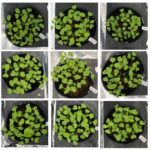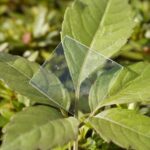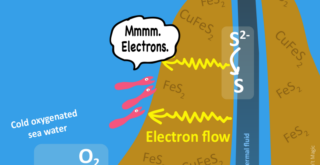A former Unit Leader at RIKEN CSRS, Ryoung Shin was kind enough to write this article explaining the kinds of research being done with plants in efforts to de-pollute soil. This is a topic we have covered before on our blog and are happy to cover it again.

Ryoung Shin, PhD
Ryoung Shin was a Unit Leader at the RIKEN Center for Sustainable Resource Science (CSRS)
At RIKEN CSRS, my research focused on plant nutrient-use efficiency, seaweed survival mechanisms, and developing methods for removing unwanted metals from the environment
UUnlike water and air pollution, soil pollution doesn’t become visible right away. As a result, it’s hard to know that it’s happening, and it’s common to discover pollution only after it has progressed. In addition, since soil pollution is long lasting, purification requires a lot of time and money.
But soil pollution is a significant problem. When soil is polluted, crop growth can be inhibited by harmful substances, and pollutants can flow into our bodies through the food chain and cause harm. For example, increasing acidity in the soil due to acid rain hinders plant growth, and this is compounded by the heavy metals present in pesticides and fertilizers. If that isn’t enough, soil pollution can also cause groundwater pollution, which affects us more directly. This happens because soil pollution is a chronic problem that’s often invisible. When pollutants penetrate underground, the groundwater can of course be contaminated as well.
So why does pollution occur? The greatest cause is what we throw away. Common examples of pollutants are livestock excrement, industrial waste such as heavy metals and oil leakage from underground storage facilities, agricultural waste such as residues from fertilizers and pesticides, chemicals from abandoned mines, and radioactive waste or leaks from nuclear power plants, including radiocesium (radioactive cesium).
The ideal solution is to avoid pollution entirely by strictly managing the sources of pollution and preventing waste from getting into the soil. However, as this is not really practical, we need effective remediation methods to deal with pollution when it occurs.
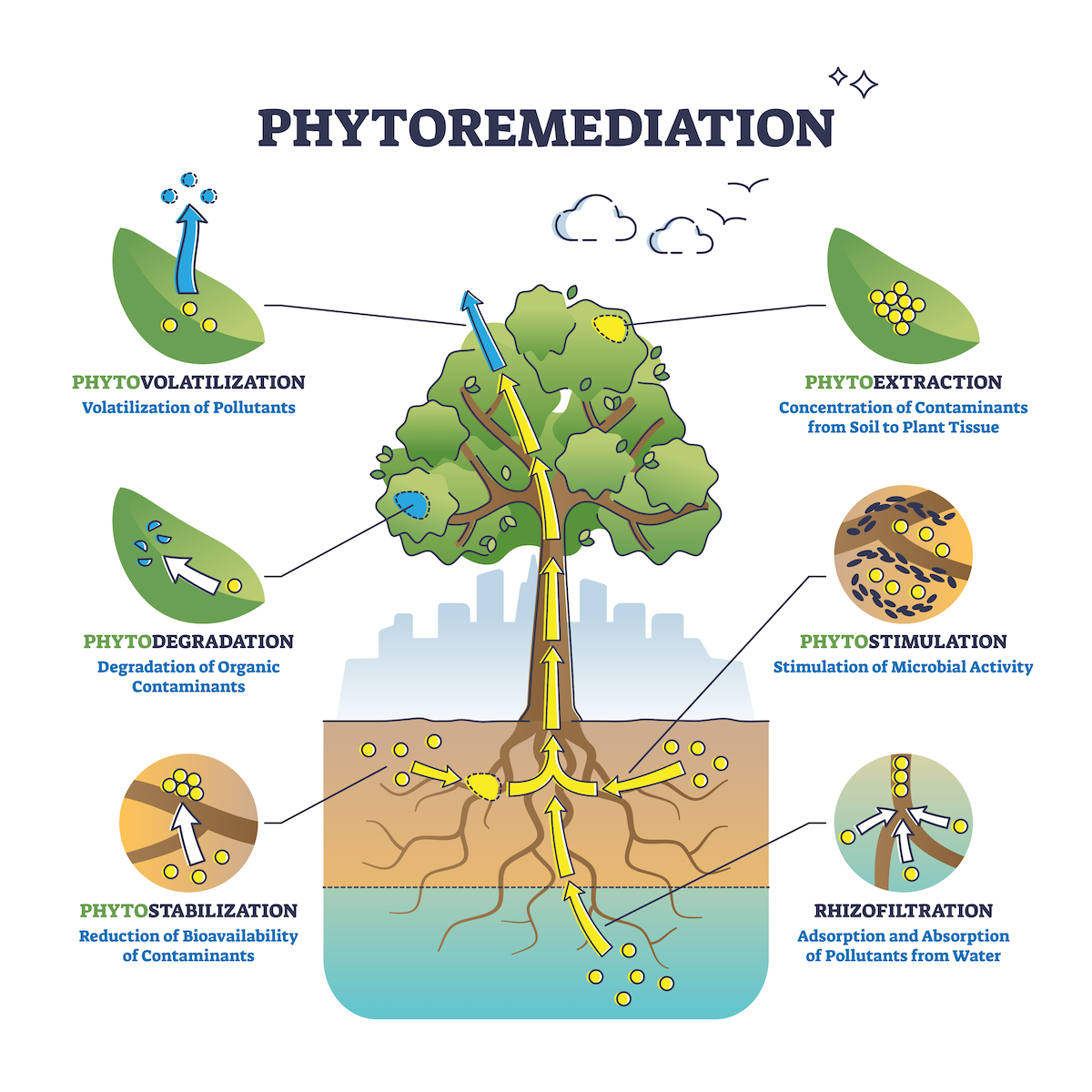
Phytoremediation as plant based approach for bioremediation – using plants to clean up the environment.
Soil pollution can be remediated in various ways, including chemical, physical, and biological methods. One promising method is to use plants or plant-related methods—or what we call phytoremediation. Phytoremediation is particularly attractive because it is eco-friendly, cost-effective, and aesthetically pleasing. Importantly, it also generates less waste than other approaches.
The basic concept in phytoremediation is that plants (that we don’t intend to eat!) will suck up the pollutants from the soil. Much research in this field focuses on finding or developing plants that can do this efficiently. Indeed, numerous plant species have been tested to see how well they can extract contaminants from the soil. Some recent experiments have involved using sunflowers or amaranths to remove radiocesium from the soil in Chernobyl (but not in the Fukushima area), white clovers and white-water sedges to remove cadmium and nickel, and the common reed and lesser bulrush to remove cadmium, lead, and chromium (Bhat et al, 2022; Shin and Adams, 2016). In addition, ferns played a critical role in removing arsenic from Washington D.C. soil in the early 2020s (Beans, 2017).
Phytoremediation efficiency varies depending on the physicochemical properties and composition of the soil, soil microorganisms, and plant growth conditions. In order to further improve efficiency, researchers have looked for ways to modify the mechanisms by which unwanted metals can be taken up by plants, and have found some success using genetic modification. However, there are many practical problems involved in using genetically modified organisms in real fields of crops.
Another way to remove unwanted metals from the environment in an eco-friendly and cost-saving manner is biosorption using plant materials. Unlike classic phytoremediation, biosorption does not require energy or rely on the ability of plants to uptake metals. Rather, biomaterials from such as Sargassum glaucescens, Cystoseira indica, and Azolla filiculoides are modified so that they can absorb meaningful amounts of harmful metals from the environment. In addition, plant-based filtration systems using chemically treated processed plant materials such as powdered moss, mucilaginous seeds of basil and water hyaninths, have been considered as an alternative filtration system for removing unwanted metals from the environment (Krishna et al. 2004; Ubando et al., 2021).
But soil pollution is a significant problem. When soil is polluted, crop growth can be inhibited by harmful substances, and pollutants can flow into our bodies through the food chain and cause harm. For example, increasing acidity in the soil due to acid rain hinders plant growth, and this is compounded by the heavy metals present in pesticides and fertilizers. If that isn’t enough, soil pollution can also cause groundwater pollution, which affects us more directly. This happens because soil pollution is a chronic problem that’s often invisible. When pollutants penetrate underground, the groundwater can of course be contaminated as well.
So why does pollution occur? The greatest cause is what we throw away. Common examples of pollutants are livestock excrement, industrial waste such as heavy metals and oil leakage from underground storage facilities, agricultural waste such as residues from fertilizers and pesticides, chemicals from abandoned mines, and radioactive waste or leaks from nuclear power plants, including radiocesium (radioactive cesium).
The ideal solution is to avoid pollution entirely by strictly managing the sources of pollution and preventing waste from getting into the soil. However, as this is not really practical, we need effective remediation methods to deal with pollution when it occurs.
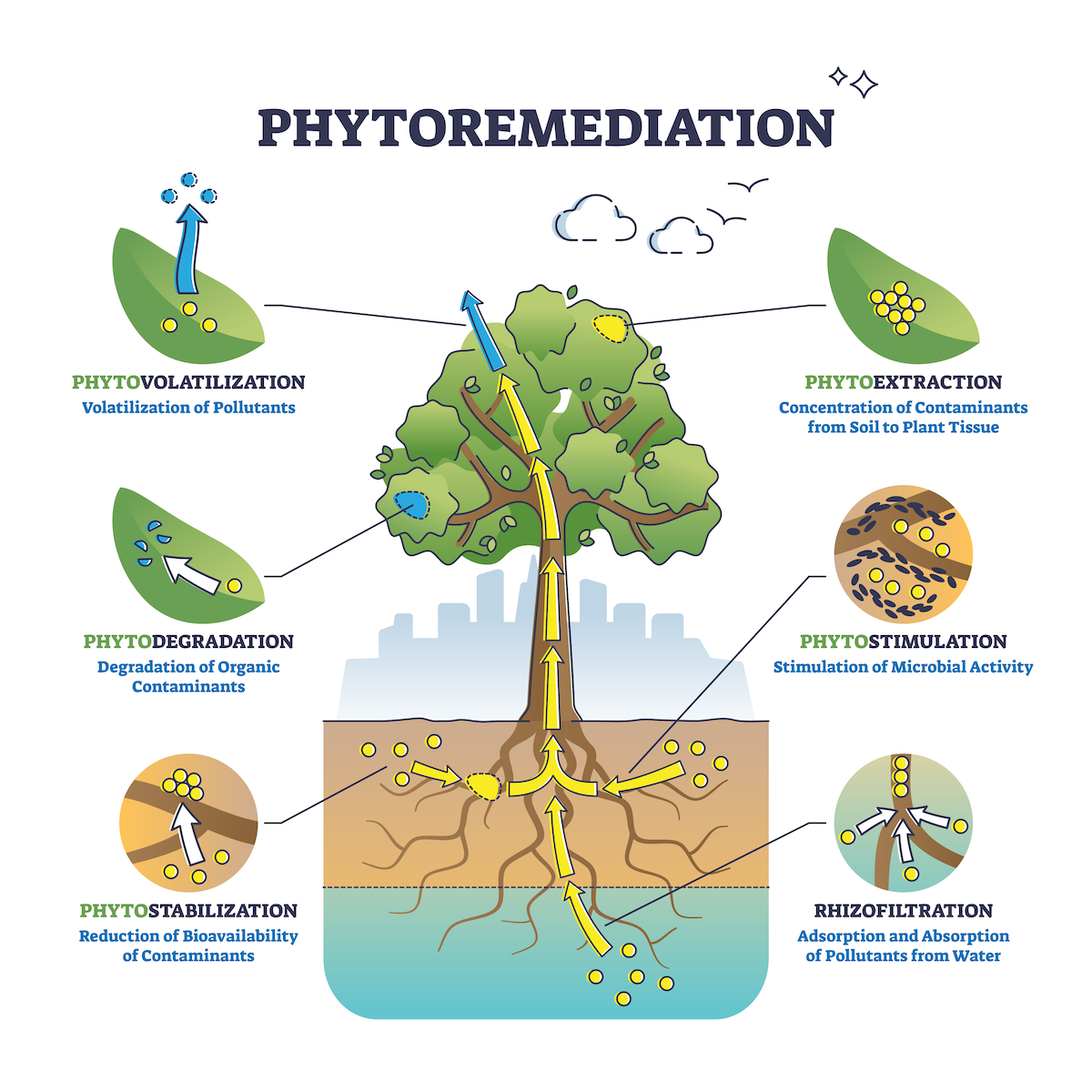
Phytoremediation as plant based approach for bioremediation – using plants to clean up the environment.
Soil pollution can be remediated in various ways, including chemical, physical, and biological methods. One promising method is to use plants or plant-related methods—or what we call phytoremediation. Phytoremediation is particularly attractive because it is eco-friendly, cost-effective, and aesthetically pleasing. Importantly, it also generates less waste than other approaches.
The basic concept in phytoremediation is that plants (that we don’t intend to eat!) will suck up the pollutants from the soil. Much research in this field focuses on finding or developing plants that can do this efficiently. Indeed, numerous plant species have been tested to see how well they can extract contaminants from the soil. Some recent experiments have involved using sunflowers or amaranths to remove radiocesium from the soil in Chernobyl (but not in the Fukushima area), white clovers and white-water sedges to remove cadmium and nickel, and the common reed and lesser bulrush to remove cadmium, lead, and chromium (Bhat et al, 2022; Shin and Adams, 2016). In addition, ferns played a critical role in removing arsenic from Washington D.C. soil in the early 2020s (Beans, 2017).
Phytoremediation efficiency varies depending on the physicochemical properties and composition of the soil, soil microorganisms, and plant growth conditions. In order to further improve efficiency, researchers have looked for ways to modify the mechanisms by which unwanted metals can be taken up by plants, and have found some success using genetic modification. However, there are many practical problems involved in using genetically modified organisms in real fields of crops.
Another way to remove unwanted metals from the environment in an eco-friendly and cost-saving manner is biosorption using plant materials. Unlike classic phytoremediation, biosorption does not require energy or rely on the ability of plants to uptake metals. Rather, biomaterials from such as Sargassum glaucescens, Cystoseira indica, and Azolla filiculoides are modified so that they can absorb meaningful amounts of harmful metals from the environment. In addition, plant-based filtration systems using chemically treated processed plant materials such as powdered moss, mucilaginous seeds of basil and water hyaninths, have been considered as an alternative filtration system for removing unwanted metals from the environment (Krishna et al. 2004; Ubando et al., 2021).
Further reading
1. Beans C (2017) Phytoremediation advances in the lab but lags in the field. Proc Natl Acad Sci USA. doi:10.1073/pnas.1707883114
2. Bhat et al. (2022) Phytoremediation of heavy metals in soil and water: An eco-friendly, sustainable and multidisciplinary approach. Chemosphere. doi:10.1016/j.chemosphere.2022.134788
3. Ubando A, Africa A, Maniquiz-Redillas M, Culaba A, Chen W, Chang J (2021) Microalgal biosorption of heavy metals: A comprehensive bibliometric review. Journal of Hazardous Materials. doi:10.1016/j.jhazmat.2020.123431
4. Shin R, Adams E (2016) Cesium Uptake in Plants: Mechanism, Regulation and Application for Phytoremediation. Impact of Cesium on Plants and the Environment. doi:10.1007/978-3-319-41525-3_6

